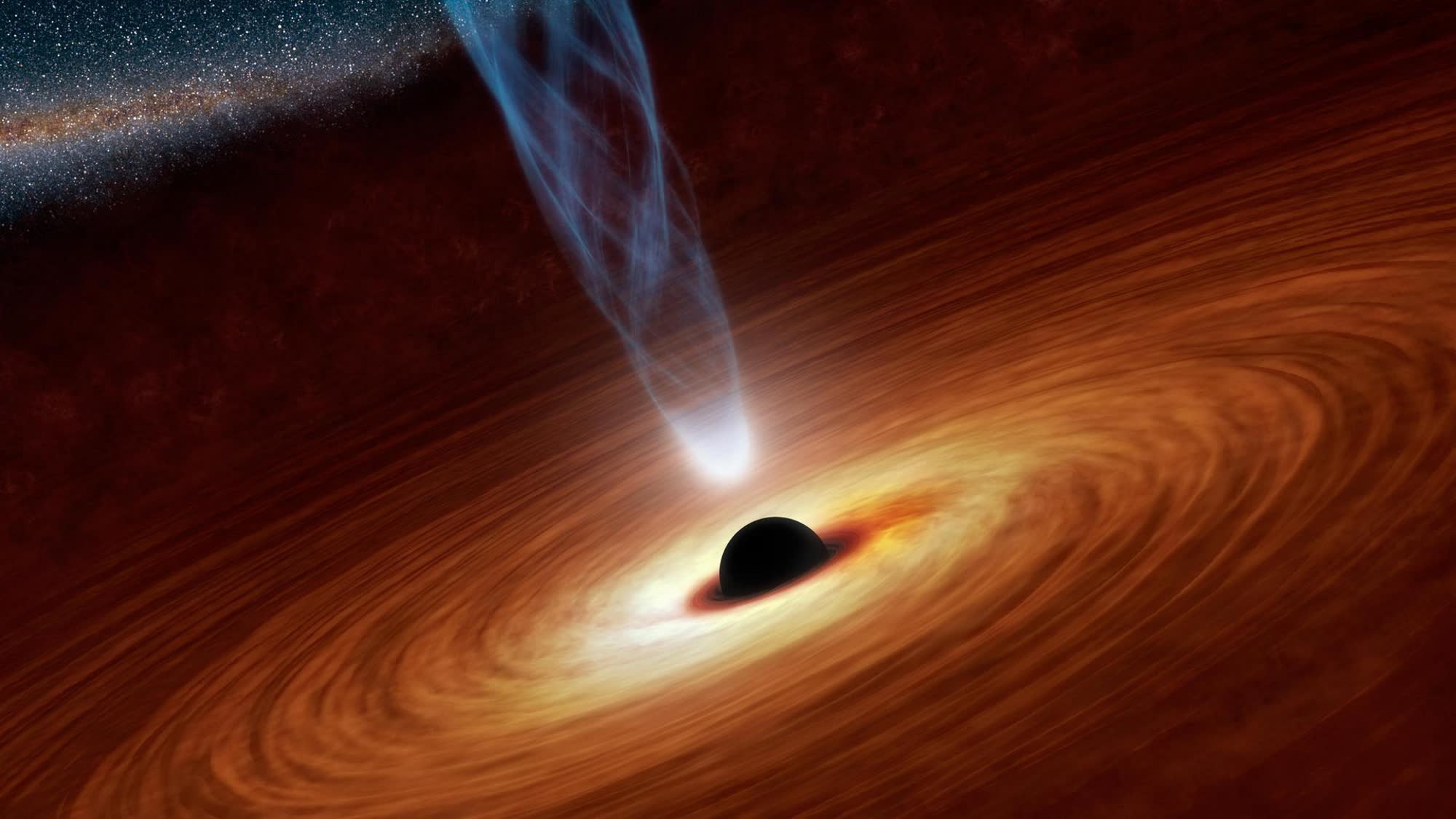Why it matters: Supermassive black holes (SMBH) are some of the most extreme phenomena populating the universe. They usually reside at the center of their host galaxies, but sometimes they can be ejected from their place to start a solitary pilgrimage through the void of deep space.
By observing an unexpected trail in the gas cloud surrounding a dwarf galaxy, an international team of researchers has now found what they consider a potential candidate for a "runaway supermassive black hole" phenomenon. The light emitted by the gargantuan astronomical object traveled more than 7.5 billion years before reaching planet Earth, and it was seemingly traveling at 1,600 kilometers per second.
The "serendipitous" discovery is described in a study accepted for publication on The Astrophysical Journal Letters, where researchers from the USA, Canada, and Australia are offering their explanation about how the interaction of a "runaway supermassive black hole" with the circumgalactic medium (CGM) can leave a wake of shocked gas and young stars formation behind.
CGM is a hot plasma formation (where "hot" means 100,000 to 10,000,000 kelvins) believed to exist in the space between galaxies, hosting 40-50% of all the baryonic "normal matter" contained in the current universe. Meanwhile, supermassive black holes are generally feeding themselves with dust and energy at the center of almost every large galaxy like our own Milky Way.

In their paper, the researchers are offering some explanations about how a SMBH can leave its galactic center to start wandering through the universe. When a pair of galaxies merge, the paper explains, the two SMBH at their centers form a binary system with the two extreme objects orbiting the gravity center of the new formation for potentially billions of years.
If a third SMBH enters the system, the new complex interaction can lead to a slingshot effect through which one of the black hole cores gets ejected and sent toward outer space. Even without a third SMBH, the galaxy merger could be violent and extreme enough to eventually kick one of the two SMBH nuclei out.
The trail of gas and new stars observed with the Hubble Space Telescope could have other explanations, the researchers concede. However, based on the small number of papers previously written on the topic, they think a rogue SMBH could be the best theory for the observed phenomenon. This kind of research would also benefit from "further theoretical work," the researchers say.
